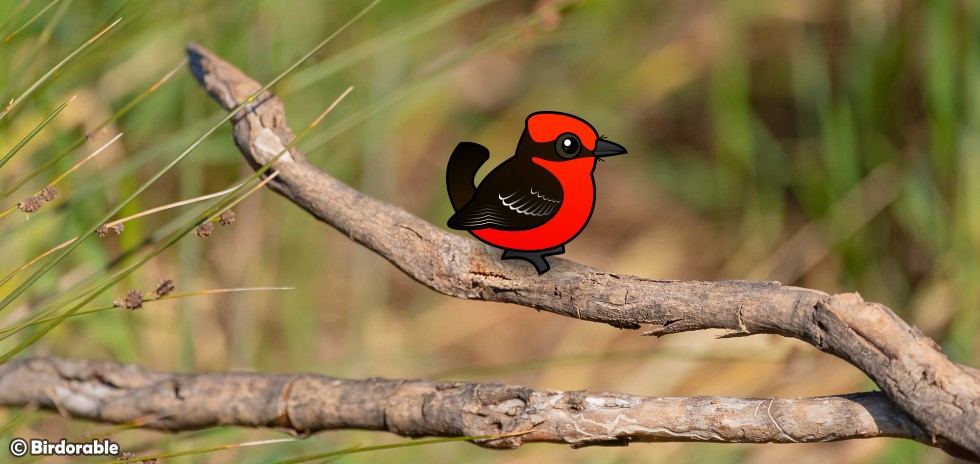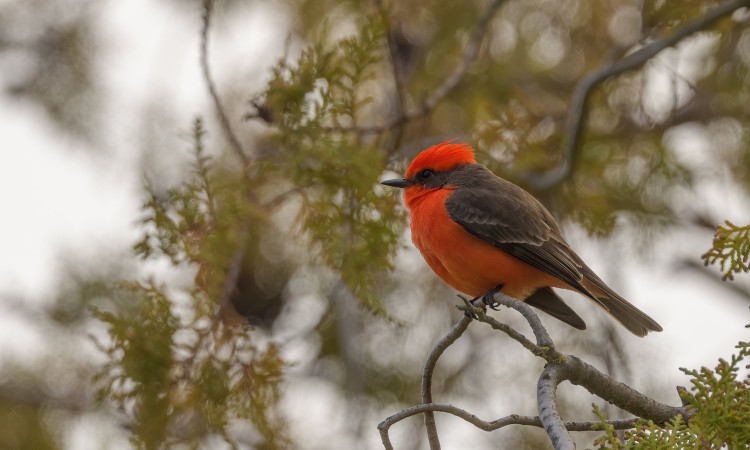The Vermilion Flycatcher: Birdorable's Latest Feathered Friend

Today we are proud to announce that we have added the Vermilion Flycatcher to Birdorable as our 82nd bird. Known for its vivid red plumage in males, which contrasts beautifully against its brownish-black wings and tail, this bird is a visual spectacle. The females, while more subdued in color with their peachy underparts and grayish-brown upperparts, carry a subtle elegance that complements the males' fiery display. These birds, primarily found in the Americas, from the southwestern United States down through Central America to northern Argentina, are a vibrant splash of color in the landscapes they inhabit.
Beyond their captivating appearance, Vermilion Flycatchers lead fascinating lives. As their name suggests, they are adept insect hunters, catching their prey in mid-air with remarkable agility and precision. Observers are often treated to the sight of these birds performing acrobatic flights, a testament to their hunting prowess. Their diet mainly consists of insects, including flies, beetles, and moths, which they snatch from the air with a sharp snap of their beaks.
The breeding habits of these flycatchers are equally intriguing. They are known for their elaborate courtship displays, where the male performs a series of flight maneuvers to attract a mate. These displays, coupled with their vibrant colors, make them one of the most visually captivating breeding rituals in the bird world. Nests are built by the females and are carefully concealed in the branches of trees or bushes, providing a safe haven for their eggs and, eventually, their chicks.
Despite their beauty and the joy they bring to birdwatchers, Vermilion Flycatchers face challenges from habitat loss and environmental changes. Conservation efforts are crucial to ensure that these stunning birds continue to thrive and grace our environments with their presence. Protecting their habitats and supporting conservation initiatives are vital steps in safeguarding the future of the Vermilion Flycatcher.
In celebration of this remarkable species, the Vermilion Flycatcher has been added to the Birdorable family, joining a growing list of birds that have been 'cutified' in the unique Birdorable style.

Male Vermilion Flyatcher by Becky Matsubara (CC BY 2.0 DEED)









Comments
Leave a comment
Thank you!